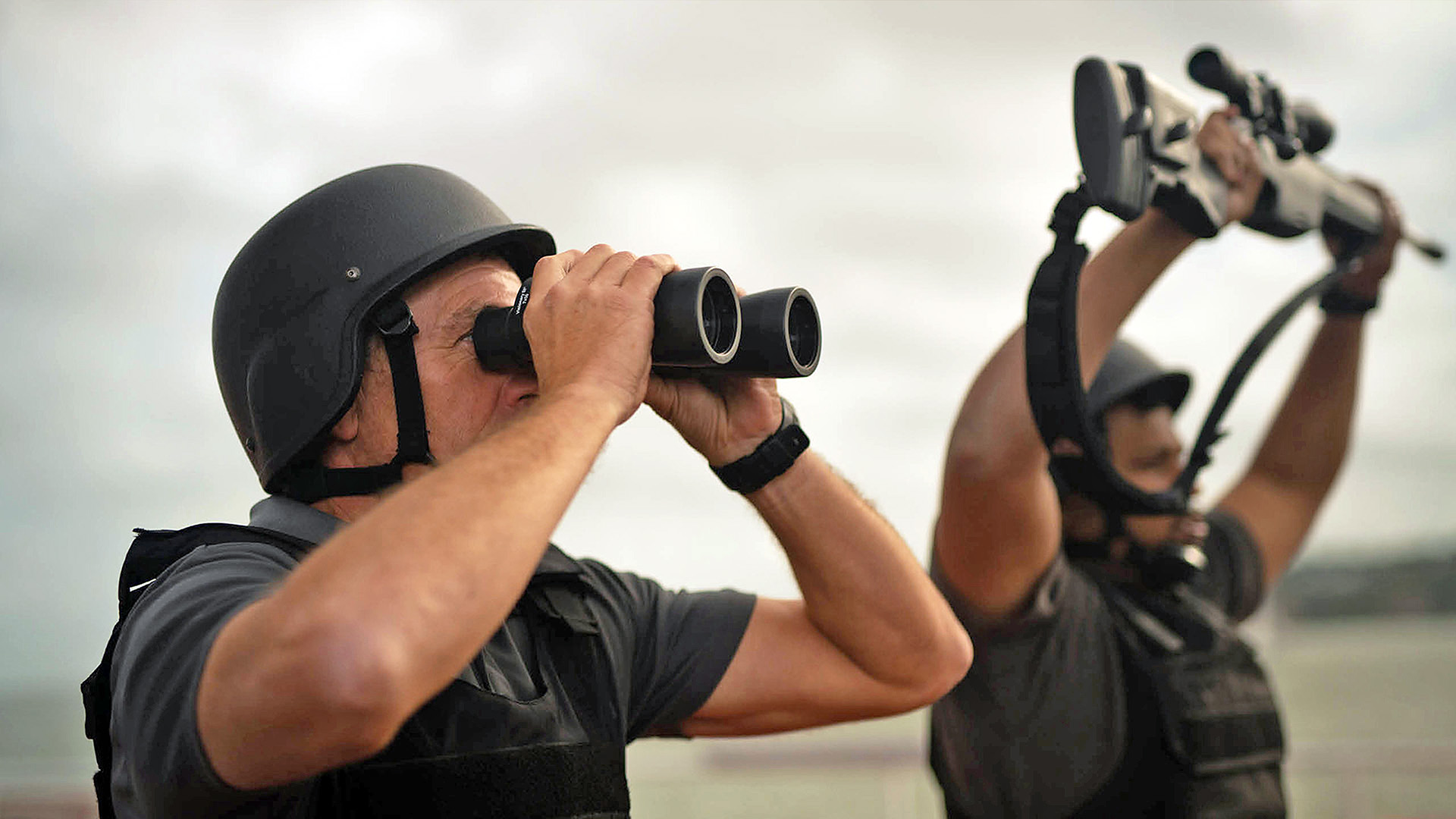Nearly every day, private armed security teams (PASTs) stationed on a floating armory somewhere in the Indian Ocean will get a message from supervisors at Ambrey, a U.K.-based firm specializing in maritime risk management. They are to grab their L1A1 SLR or Steyr Scout rifles and head out to a commercial ship sailing to the narrow and increasingly dangerous Bab al-Mandab Strait.
Once on board, the PAST will provide armed security, overwatch and help the crews take all the safety precautions possible for a trip through waters where U.S. Defense Secretary Lloyd Austin said Iranian-backed Houthi rebels have conducted over 100 drone and ballistic missile attacks, targeting 10 merchant vessels in the past month. This is in addition to boarding attempts and even seizing ships outright. These activities are ongoing in a region that’s already a piracy epicenter.
“Ambrey is operating somewhere between 500 and 600 transits a month in the Red Sea at this current time,” said Joshua Hutchinson, a former Royal Marine commando now serving as the company’s Managing Director of Risk and Intelligence. “Clearly, there’s a natural increase in demand because of the threat that is emerging in the market.”
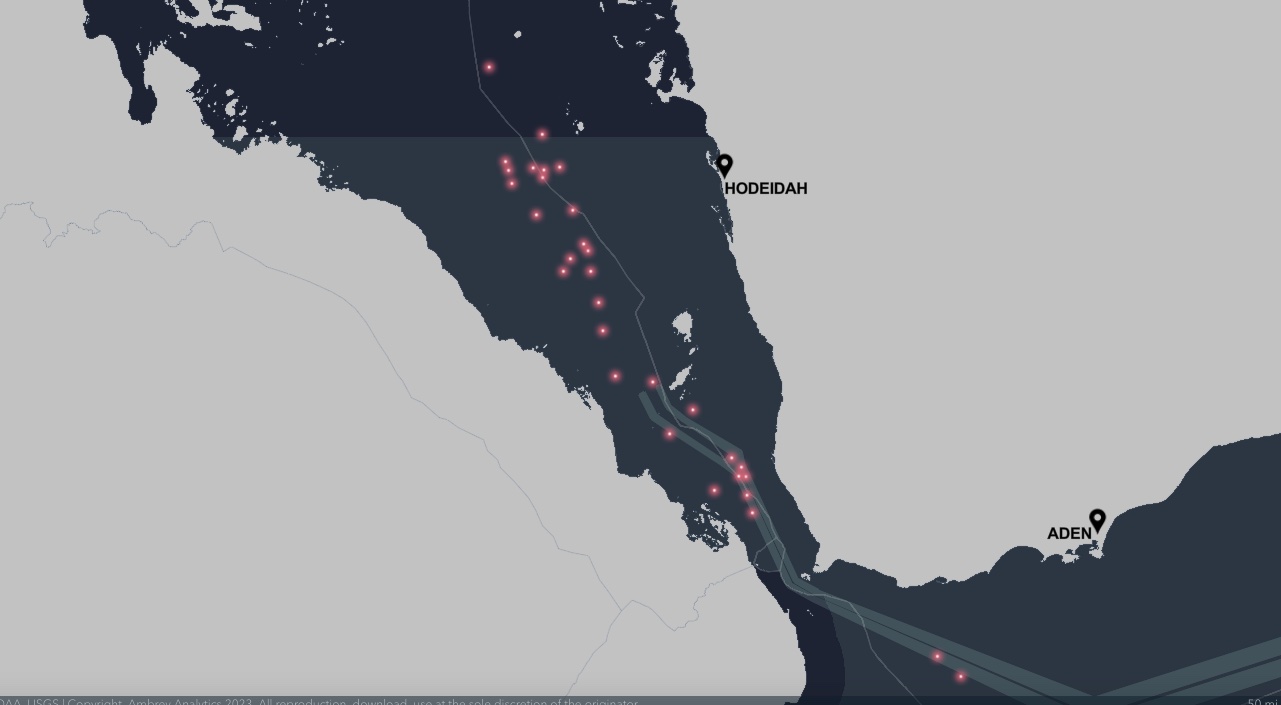
Security At Sea
The company, formed in 2010 to combat Somali piracy, has grown to the world’s largest maritime risk management firm, said Hutchinson. Armed security is one part of a much larger portfolio that includes providing proprietary data-driven intelligence about looming threats that helps shipping companies mitigate risks.
Ambrey has thousands of trained contractors working for it. They are prior military, “so they’ve got experience with weapons,” said Hutchinson, adding that they go through “an extensive maritime training program and are licensed and certified annually.”
The crews operate on ships in teams of between three and eight at a time, the latter figure used only in the most exigent of circumstances, said Hutchinson. The number of guards per team depends on the size of the vessel and the potential risk of the transit.
They use bolt action or semi-automatic rifles like the L1A1 and Steyr because they operate under British maritime law, which precludes the use of fully automatic weapons in these circumstances.
“So you show your weapons to potential perpetrators,” said Hutchinson. “If you’re fired upon, you have to make an assessment to return accurate fire to deter a threat.”
That’s exactly what happened on Dec. 13, when Ambrey armed guards aboard the M/T Ardmore Encounter exchanged fire with Houthis approaching in a skiff.
“An armed team on a skiff approached the Ardmore vessel,” said Hutchinson. “The armed team used the correct rules of force. Showed their weapons and they were fired upon. They returned accurate fire and the skiff left the area.”
The Houthis then fired two ground-based anti-ship ballistic missiles at the vessel that missed, a U.S. military official told The War Zone at the time.
The security teams, however, do much more than fire at threats.
They offer advice and training to the master of the vessel’s crew. They identify the location of anti-piracy barriers and door chocks. They make sure there’s a citadel – a pre-planned, secure location where the crew can shelter during an attack or boarding. There are separate locations depending on whether there is a threat from above or the surface. Ambrey security guards also provide around-the-clock watch.
In addition, a lot of the security work takes place ahead of time. It starts with Ambrey’s Guardian digital watchkeeping service. That consists of “pre-voyage planning with the vessel prior to entering a high risk area,” said Hutchinson. “We will do a best management check, we’ll choose the best route for that master that may change depending on dynamic elevated threat areas. It also comes down to potentially the time of day, depending on the size and class or the vessel, then then on top of that, we’ll start to look at better mitigating factors for that particular vessel in terms of what else can be done.”
Ambrey tracks 250,000 commercial vessels around the world and has technology to pick up anomalies in course and speed, Hutchinson said. The company feed constant information to vessels about best routes to avoid threats in the first place, including proximity to Islamic Revolutionary Guard Corps, Iranian Navy assets, and Houthi-controlled areas.
The use of drones “in a direct attack is deliberate and intelligence led,” the company’s website states. “Avoid predictable routing behavior. Adjust routing, even by small margins, and avoid contested waters and higher risk areas.”
Nothing, of course, is guaranteed. On Nov. 23, the cargo ship CMA CGM Symi was hit by what Hutchinson said was an Iranian-made Houthi Shahed-136 variant while transiting the Indian Ocean south of Oman, Hutchinson said.
You can see that attack in the video below Hutchinson shared with The War Zone. The drone strikes the ship and the ensuing explosion sparks a fire that was eventually extinguished.

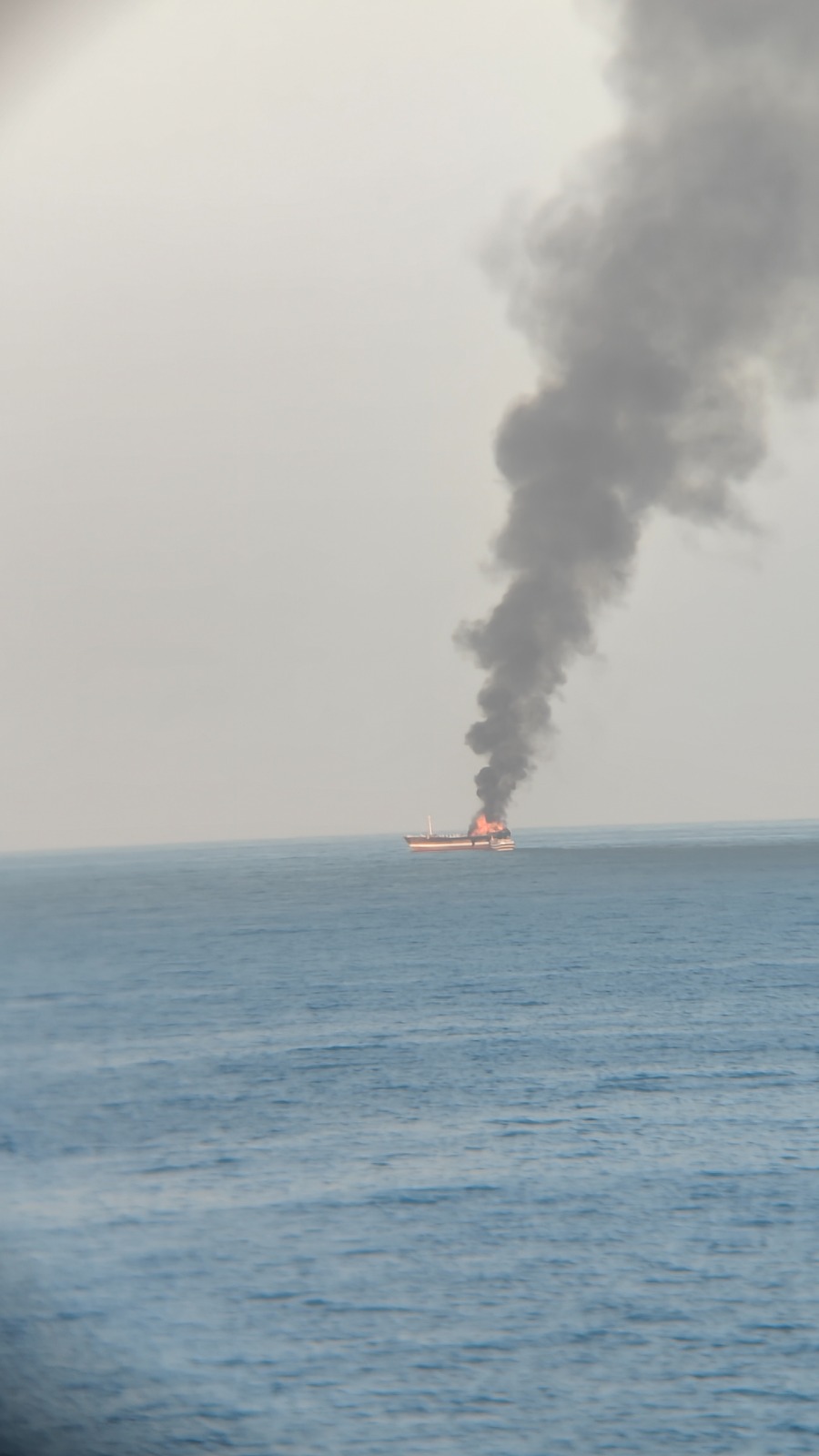
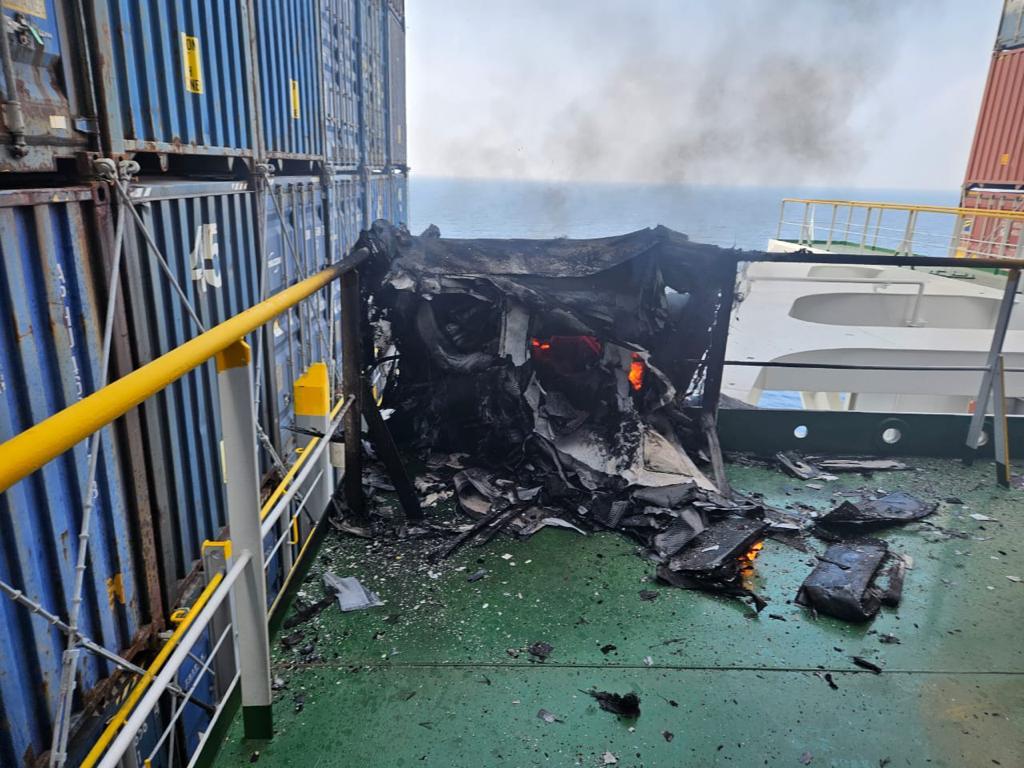
Listening To Attacks Unfold
Though based in London, Hutchinson has a good sense of what commercial ships being attacked by Houthi drones and missiles are going through. That’s because he and his colleagues listen live to the radio transmissions from the ships as part of their job.
“Anyone going into the area right now will be fully aware of what it feels and sounds like,” he told The War Zone.
The first transmission is usually from the Houthis. He shared an audio file of one such encounter. It is now used for training purposes, but he would not say which incident it was from for security reasons.
“You have just five minutes. If you don’t alter your course at this time you’ll be attacked, over,” the Houthis demanded over the radio.
“It’s very disorientating for a ship’s master to hear that,” said Hutchinson. You can listen to the radio exchange below:

What usually happens next is that a warship in the area will respond, telling the commercial vessel to alter its course away from Yemeni waters. That’s what happened in this situation.
“Then the Yemeni authorities will come back and say ‘if you do not pull into port, we will target your vessel,’ which is probably a sinking, sickening feeling for the master to know that at that moment in time, they are being targeted on the radars.”
At that point, the ships go on high alert.
“The security team will be making sure the crew is safe,” said Hutchinson, adding even as a combat veteran, “nothing can prepare you for the shock and impact of any ballistic weapon, regardless of size.”
“Most likely, there will be a shudder, a sonic ballistic sound that they will feel. And then there is disorientation that will always come in terms of what’s happened? Where did it happen? Is everybody okay?”
The next step, said Hutchinson, is “consolidation after impact, making sure the team goes through the process of reporting it to the relevant authorities. We always advise our team that in that moment, it’s about the life of the individuals on board that vessel, keep the vessel on course, secure life, and then go through the procedure.”
All private security firms, of course, operate knowing that warships are the only ones able to directly counter drones and missiles.
“Fortunately, there is a lot of support in the area from warships, rescue centers and joint coordination centers,” said Hutchinson, like Task Force 153, charged with international maritime security and capacity-building in the Red Sea, Bab al-Mandeb, and the Gulf of Aden.
As we have reported previously, warships from the U.S., U.K. and France have downed dozens of Houthi drones and missiles in the past month since the attacks began in the wake of the Israel-Gaza war.
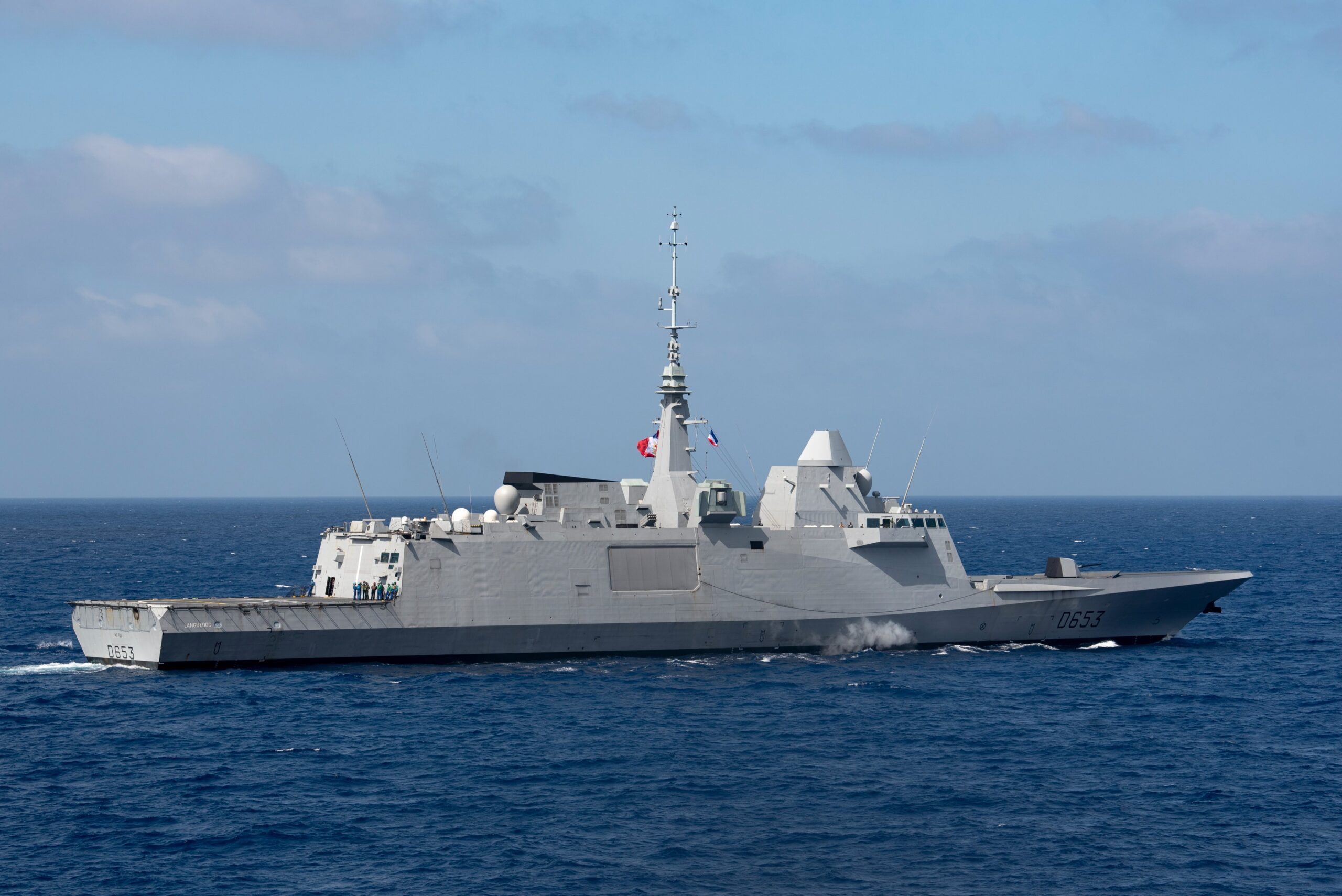
In just one day alone last week, the Arleigh Burke class guided missile destroyer USS Carney downed 14 drones , a U.S. military official told The War Zone. The Type-45 destroyer HMS Diamond downed one drone targeting merchant shipping in the Red Sea with a Sea Viper missile.
Among the 10 commercial vessels targeted, Hutchinson said “very luckily, there’s been a very small amount of non-life threatening injuries.” Only one ship – the MSC Palatium III – was unable to get underway after being struck by a Houthi ballistic missile that caused a fire on Dec. 15. The Liberian-flagged cargo vessel was fired upon by two Houthi ballistic missiles, but one missed. The incident took place about 30 nautical miles southwest of Mokha, Yemen, according to the Royal Navy’s United Kingdom Maritime Trade Operations. The Arleigh Burke class guided missile destroyer USS Mason responded.

Coordination With The Military
Ambrey has “an open channel of communications with all naval assets and reporting bodies in the area,” said Hutchinson. That includes Task Force 153, as well as U.S. Naval Forces Central Command (NAVCENT).
“I’ve got to be careful of how we talked about how we do that, because there’s a level of intellectual property. But yes, we have a an open channel where we would naturally report incidents and we are encouraged to do so,” he said, adding that’s been standard practice for the past decade.
“When we report, they will make their own decision of escalation and prioritize,” he said of the maritime task force.
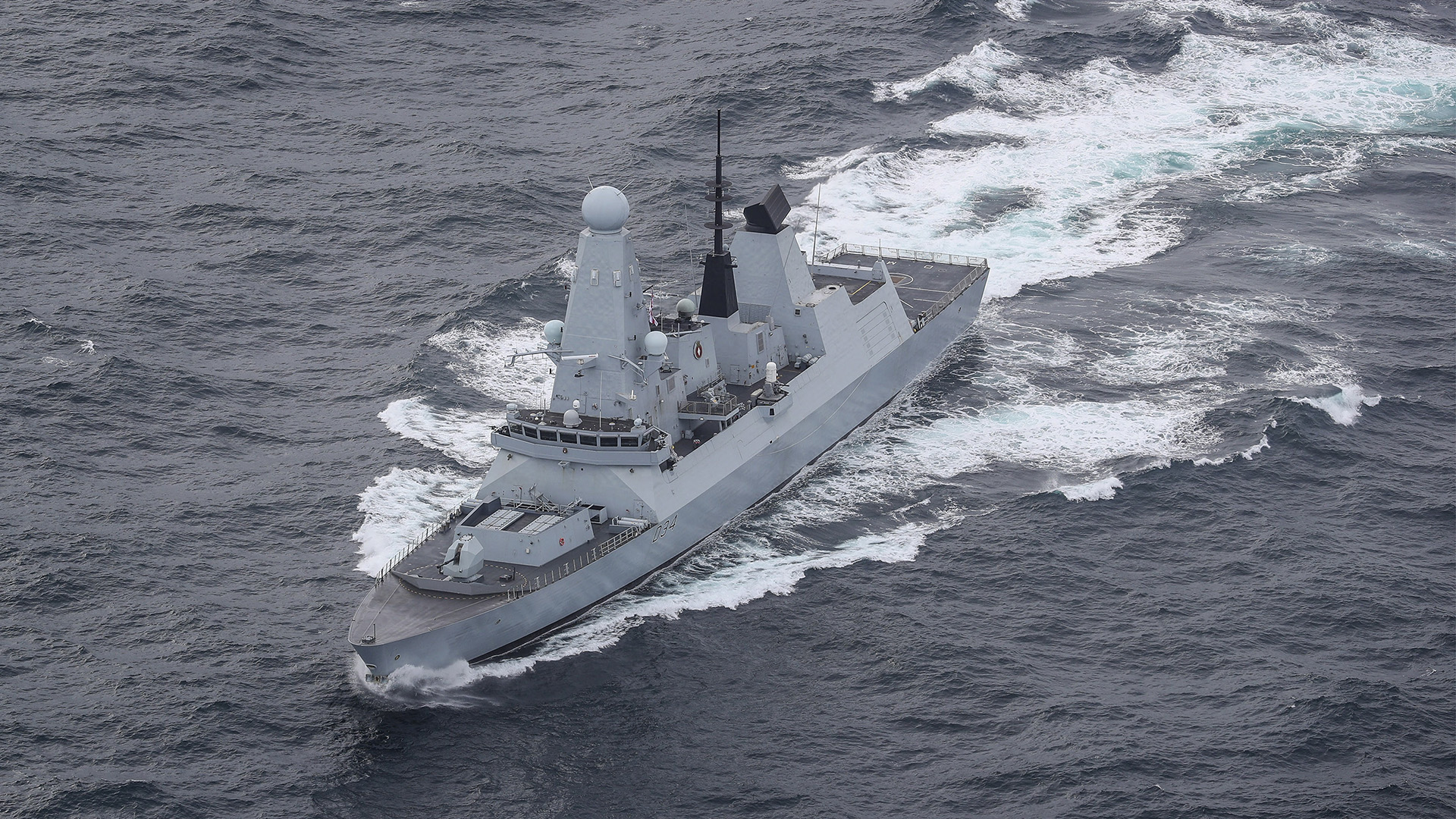
Task Force 153 did not return a message seeking comment about how it interfaces with these contractors. NAVCENT spokesman Cmdr. Mike told us that its Naval Cooperation and Guidance for Shipping (NCAGS) maritime liaison officers “have a close relationship with the global maritime community of interest, including companies, organizations and flag states.”
He could not comment specifically on Ambrey’s activities.
Ambrey would like to play a role in the newly formed Operation Prosperity Guardian (OPG), a so-far 19-member coalition operating under Task Force 153 leadership designed to protect commercial shipping against Houthi threats.
Details of exactly what OPG will do remain nebulous. Like many in the shipping industry, Ambrey has a lot of questions about exactly how it will work.
“I think what the international community shipping wants to understand timeframes,” he said. “Where will these assets be based? How long before they get there? What areas are they covering? What’s their reaching capability? And I think that’s the kind of stuff that we that the industry will need.”
“We want to see that as well,” said Hutchinson, “because we want to work with them. Only when those details become clear will there be an understanding.”
“There can’t be a dark fleet of warships, because that does not provide public security to the international community,” he added. “So they need to be transparent around that. But the problem is, you know, there’s tactical warfare going on, where the Houthis have said, ‘we will target you.’ So I honestly can’t see how they’re going to be able to de-escalate the situation. But I think offering that support is paramount, because we’re really, we’re in an unprecedented time.”
Hutchinson said his company can provide intelligence assistance about vessel locations, routes and threat patterns.
“Ambrey’s focus is to get information to the right people as quickly as possible to prevent the loss of lives, time and money,” he said.
Despite all the unknowns, Hutchinson said he’s “highly confident that [OPG] will make a difference because if I was on board a vessel, I would feel much more confident around the capability they’ve proven shooting down UAVs and missiles and raising the profile of those situations. But is that sustainable in the long term? And is the cost of doing that scalable?”
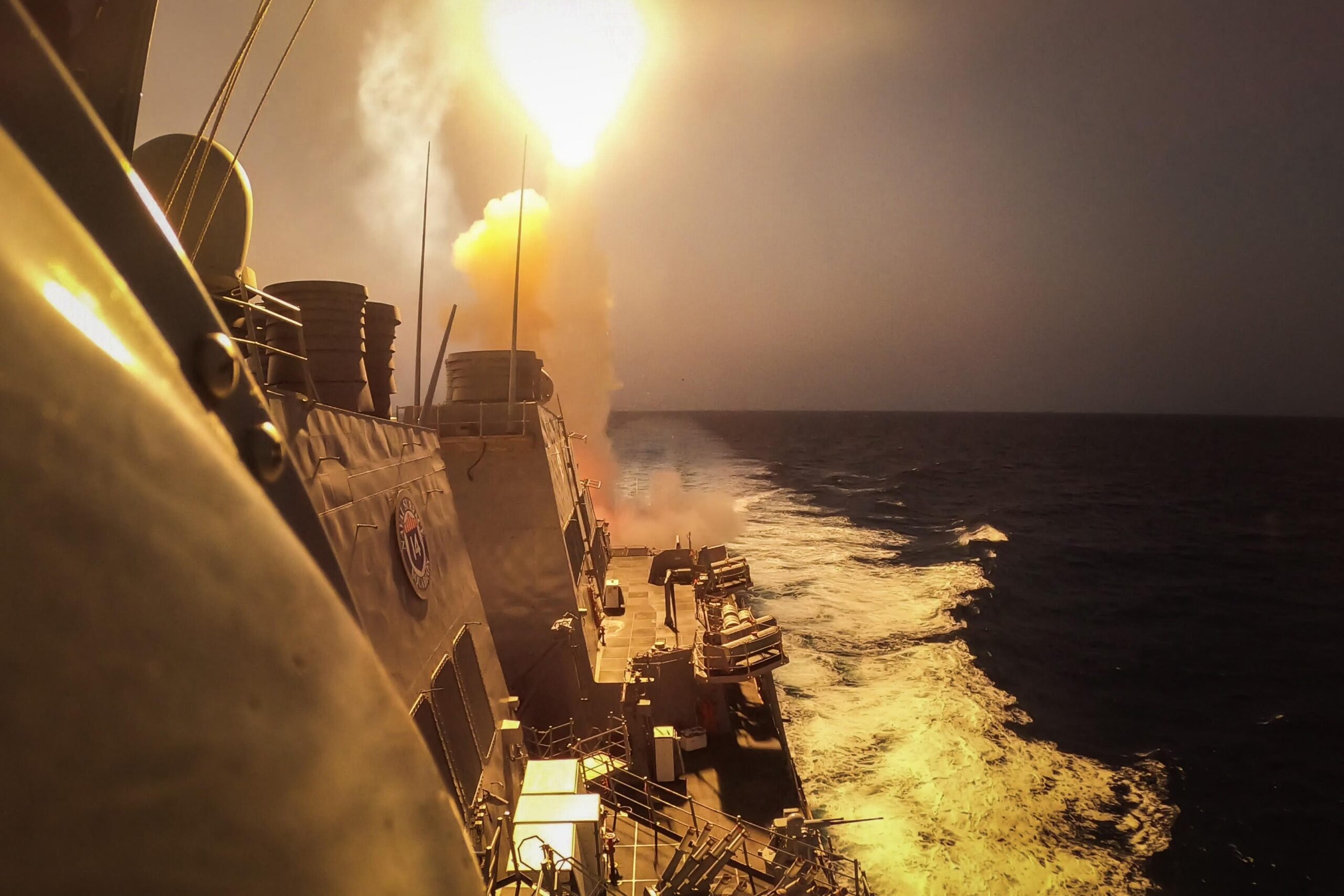
If the Houthis continue to escalate their attacks on shipping, the answers to those questions will be become increasingly important.
We’ve reached out to the Pentagon for more details about OPG and how or if they see private security firms playing a role. We will provide updates as we continue to monitor the development of the new coalition at this critical point in time.
Clarification: This story has been updated to reflect that there were no Ambrey PAST on the Symi.
Contact the author: howard@thewarzone.com
